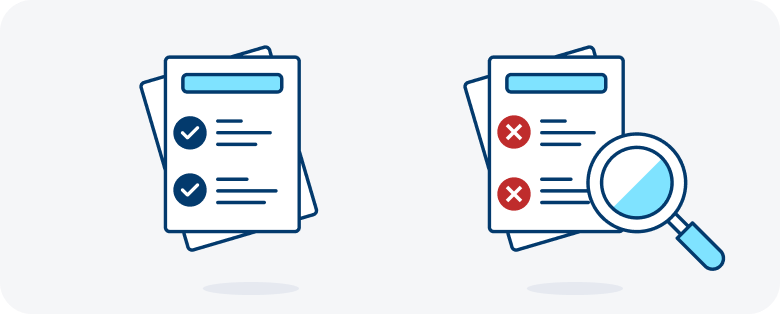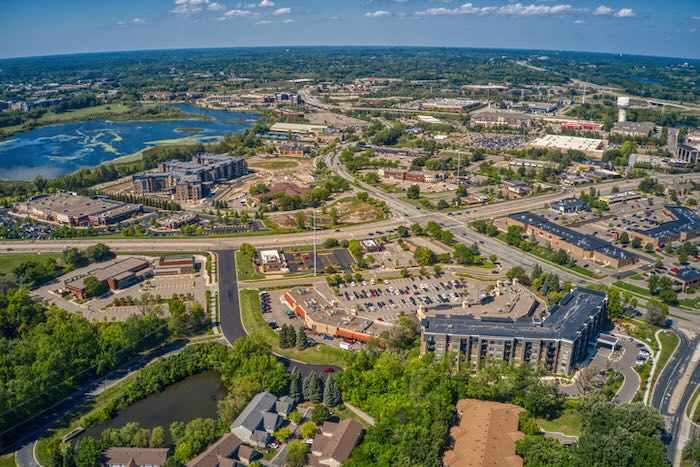Unfortunately, Minnesota property owners may encounter “squatters.” And if they do, they’ll need to understand squatters’ rights in Minnesota — stat. This situation can lead to complex legal challenges, especially when squatters attempt to claim property rights through adverse possession.
In this article, we’ll explore Minnesota squatter laws, the legal concept of adverse possession, and how landlords can protect themselves and their properties against squatters.
Understanding Trespassers vs. Squatters
It is important to differentiate between trespassers and squatters. A trespasser enters a property without permission but typically does not intend to stay for an extended period.
On the other hand, a squatter occupies a property without the owner’s consent and intends to stay long-term. This distinction matters because squatters may eventually claim legal rights to the property if they meet certain conditions.
Quickly handling trespassers can prevent them from becoming squatters and obtaining squatters’ rights. Once someone is classified as a squatter, the legal process to remove them becomes more complicated and often requires more formal eviction procedures.
Is Squatting Legal in Minnesota?
Squatting, or occupying a property without the owner’s permission, is illegal in Minnesota. But, the law includes nuances that can complicate the situation. Squatters rights in Minnesota may allow someone to claim rights to a property under specific conditions outlined by Minnesota law.
While the act of squatting itself is not legal, there are circumstances where squatters can gain legal standing.
Minnesota defines a squatter as someone who occupies an abandoned, foreclosed, or unoccupied building or area without permission. Landowners have the right to remove squatters, which landlords must do following the correct legal procedures. As a result, removing unwanted trespassers before they become squatters is even more crucial.
Attempting to evict squatters without proper legal action, such as through force or self-help evictions, can result in legal repercussions for the property owner.
Squatters Rights and Adverse Possession Laws in Minnesota

Adverse possession is a legal principle that allows someone to gain ownership of land if they occupy it for a certain period while meeting specific legal requirements. In Minnesota, squatters may use adverse possession to claim rights to a property, but only if they satisfy the conditions set by state law.
These conditions include continuous and open use of the property without the owner’s permission. The next section below provides more occupancy requirements.
It’s important to note that adverse possession laws are not uniform across the United States. Each state has its own criteria and requirements, which means understanding Minnesota’s specific laws is essential for property owners. Awareness of these laws can help landlords proactively protect their property from adverse possession claims.
Since these laws vary from state to state, property owners in Minnesota need to understand squatters’ rights. Here, adverse possession is defined under Minnesota Statute 541.02.
How Squatters Can Claim Property Through Adverse Possession in Minnesota
Losing property to a squatter through adverse possession is a worst-case scenario for any landlord. However, it is difficult for squatters to fulfill all the requirements for an adverse possession claim in Minnesota, as you’ll see below.
Additionally, landowners can prevent adverse possession claims by keeping a vigilant eye on their properties, particularly if they are vacant.
To successfully claim a property through adverse possession in Minnesota, a squatter must meet both occupancy and time requirements:
Occupancy Requirements:
- Hostile Possession: The occupation must be without the owner’s permission. Hostile doesn’t necessarily mean the confrontational sense, but rather that the squatter occupies the property as if it were their own without the owner’s consent.
- Actual Possession: The squatter must physically occupy the property, treating it as their own through maintenance, improvements, or other forms of possession.
- Open and Notorious Possession: The squatter’s occupation must be obvious to anyone, including the legal owner. This means the occupation is not hidden but apparent and noticeable.
- Exclusive Possession: The squatter must possess the property exclusively and not share control with others, including the owner or other potential squatters.
- Continuous Possession: The squatter must occupy the property continuously for a specific period. Under Minnesota Statute 541.02, this period is typically 15 years.
Time Requirements:
- 15 Years of Continuous Occupancy: Under Minnesota law (Minn. Stat. § 541.02), a squatter must occupy the property continuously for at least 15 years to claim adverse possession. This time frame must be uninterrupted; any break in occupancy could reset the clock.
Property Tax Requirements:
- In Minnesota, per Minnesota Statute 541.02, a squatter must pay property taxes for five consecutive years to win an adverse possession claim.
Landlord Rights & Responsibilities in Handling Squatters

Landlords in Minnesota have specific rights and responsibilities regarding squatters. They have the right to protect their properties from unauthorized occupants and to take legal action to remove squatters. However, they must follow Minnesota’s legal procedures for eviction.
Landlords are prohibited from using “self-help” methods to evict squatters, such as changing locks or turning off utilities, as these actions violate squatters rights in Minnesota and are illegal under Minnesota law.
Instead, landlords should serve a notice to vacate and, if necessary, file an unlawful detainer lawsuit to begin the formal eviction process.
Squatters Rights & Responsibilities in Minnesota
Squatters, while occupying a property without legal permission, still have certain rights under Minnesota law. For example, once a squatter has established residency, the landlord must follow formal eviction procedures to remove them.
Squatters also have the right to claim adverse possession if they meet all legal requirements. They must also respect the property and not cause damage or engage in illegal activities.
Squatters in Minnesota have the right to pay property taxes and improve their properties to bolster their claim of adverse possession.
How to Evict Squatters in Minnesota
To evict squatters in Minnesota, landlords should follow these steps:
- Serve a Notice to Vacate: Provide a written notice to the squatter, stating that they must leave the property.
- File an Unlawful Detainer Lawsuit: If the squatter does not leave voluntarily, file a lawsuit to begin the formal eviction process.
- Attend a Court Hearing: Present evidence that the squatter occupies the property without permission.
- Obtain a Writ of Recovery: If the court rules in favor of the landlord, receive a writ for the sheriff to remove the squatter.
- Execute the Eviction: The sheriff will enforce the court order and remove the squatter from the property.
Minnesota law explicitly prohibits “self-help” evictions, which means landlords cannot forcibly remove squatters or take unilateral actions like changing locks or shutting off utilities.
Other potential options include a cash-for-keys agreement, which could initially sting, but paying a squatter to leave may cost you less in the long run.
Legal Help for Landlords in Minnesota
Landlords dealing with squatters have several resources available:
- Minnesota State Bar Association: Provides referrals to experienced landlord-tenant attorneys who can assist with eviction proceedings and offer legal advice.
- LawHelpMN: Offers free legal information and resources for individuals dealing with housing issues, including evictions and squatters’ rights.
- EZ Evict USA: Provides online tools and services designed to streamline the eviction process for Minnesota landlords.
Preventing Future Squatter Situations
Landlords can take several steps to prevent squatters from occupying their properties:
- Regular Property Inspections: Conduct frequent checks on vacant properties to ensure no unauthorized occupants are present.
- Secure All Entry Points: Install robust locks and security systems to deter potential squatters.
- Use Signage: Place visible “No Trespassing” signs on the property to warn unauthorized individuals.
- Maintain an Active Presence: Keep the property well-maintained and regularly visit to demonstrate occupancy.
- Maintain the Property: A well-maintained property won’t catch the eye of a squatter like a rundown property will.
- Ask the Neighbors: If you have a few trustworthy neighbors nearby, ask them to keep an eye on your property.
- Use Cameras: Consider setting up a security system with cameras in clear sight so squatters know you see them before they can break in.
How Property Management Software Can Help
TurboTenant’s property management software offers various tools to help landlords manage their properties and prevent squatters:
- Rental Advertising: Quickly list properties online to reduce vacancies and attract potential tenants.
- Minnesota-Specific Lease Generation: Create customized, legally compliant lease agreements tailored to Minnesota laws.
- Automated Rental Applications: Simplify the application process for potential tenants.
- Applicant Screening: Use comprehensive screening tools to vet potential tenants thoroughly.
By using TurboTenant’s property management software, landlords can reduce vacancies and better manage their properties, minimizing the risk of squatters.
Sign up for a free TurboTenant account today to optimize your property management strategy.
Final Thoughts
For landlords in Minnesota, knowing the ins and outs of squatters’ rights is key to keeping your property safe. While the chances of a squatter successfully claiming property through adverse possession are slim, staying on top of things is still important.
Regular property checks, securing vacant homes, and understanding specific laws related to squatters rights in Minnesota can go a long way in preventing unwanted situations.
Disclaimer: TurboTenant does not provide legal advice. This material has been prepared for informational purposes only. All users are advised to check all applicable local, state, and federal laws and consult legal counsel should questions arise.
Minnesota Squatters Rights FAQs
How long can someone leave their belongings on your property in Minnesota?
If someone leaves belongings on your property, Minnesota law typically requires that you store them for a reasonable period, generally 28 days, allowing the owner time to retrieve them.
How long before a guest becomes a tenant in Minnesota?
In Minnesota, guests may be considered tenants if they stay for more than 14 consecutive days or receive mail at the property.
Can you be evicted in the winter in Minnesota?
Yes, evictions can occur during winter, but Minnesota has specific guidelines that landlords must follow, especially when children or vulnerable adults are involved.
Can you turn off the utilities on a squatter in Minnesota?
No, turning off utilities to force a squatter to leave is considered a form of self-help eviction, which is illegal in Minnesota.
